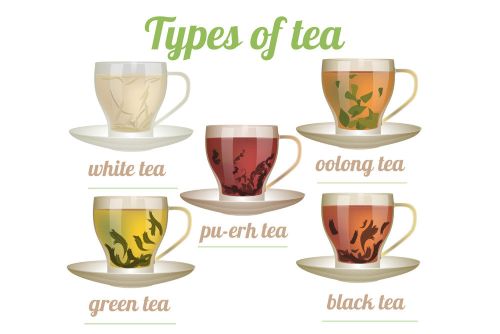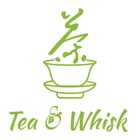Categories
Other Pages
- Age on other Planets
- Aliens
- American Flag
- Annuals
- Avoiding Scams
- Awareness Ribbons
- Baileys Liqueur
- Bananas
- Banana Tree, Grand Nain
- Banana Tree, Ice Cream
- Banana Tree, Zebrina Rojo
- Beekeeping
- Bleach
- Boogaloo
- Bookmarks
- Bullying
- Cats
- Chillicothe Businesses
- Christmas Tree
- Ciroc Vodka
- Coffee Pods
- Color Codes Chart
- Consumer Resources
- Consumer Resources - Elders
- Credit Score Checkers
- Credit Scores
- Death Checklist
- Disaronno Amaretto
- Donation
- Drug Test
- Eye Teasers
- Fonts
- Foods To Regrow
- Friend
- Funny Things
- Fun Stuff
- Giving
- Growing Blueberries
- Halloween
- Halloween Treats
- Hello!!
- Home Bar
- House Plants
- Hunger Facts
- Interesting Facts
- Kinds of Tea
- Lucky Bamboo
- Macaroni!!
- Missouri
- Missouri Prisons
- National Foundations
- Never Forget
- New Page Soon
- One Little Rose
- Orchid Growing
- Orchid Sources
- PayPal.Me
- Perennials
- Phobias A-Z
- Plant Care
- Plant Zone Map
- Propagating Plants
- Ragtime Music
- Recipes I like
- Roses
- Sadie & Beethoven
- Scam Calls
- Smile
- Speed Test
- Spices You Need
- Spices I Have
- State Trees
- Superstitions
- Symbols
- Tequila Rose
- The Ten Commandments
- Top Alcohol
- Top Animated Movies
- Top Comedy Movies
- Top Expensive Movies
- Toyota Yaris 2008
- Toyota Yaris 2012
- Tree, Calamondin Orange
- Tree, Meyer Lemon
- Tree, Persian Lime
- US Bill of Rights
- US Constitution
- US Declaration of Independence
- UV Vodka
- Weight on other Planets
- Wine Clubs
- Wines
- Wines - Missouri
Needed to read PDF's
Kinds of Tea
Tea can be divided into five basic categories:

- Black tea is allowed to wither, which precedes a process called oxidation (sometimes incorrectly referred to as fermentation) during which water evaporates out of the leaf and the leaf absorbs more oxygen from the air. Black teas usually undergo full oxidation, and the results are the characteristic dark brown and black leaf, the typically more robust and pronounced flavors of black teas, and, when brewed appropriately, a higher caffeine content compared to other teas (50-65% of coffee, depending on the type and brewing technique).
- Green tea is allowed to wither only slightly after being picked. Then the oxidation process is stopped very quickly by firing (rapidly heating) the leaves. Therefore, when brewed at lower temperatures and for less time, green teas tend to have less caffeine (10-30% of coffee). Greens also tend to produce more subtle flavors with many undertones and accents that connoisseurs treasure.
- Oolong tea (also known as wulong tea) is allowed to undergo partial oxidation. These teas have a caffeine content between that of green teas and black teas. The flavor of oolong (wulong) teas is typically not as robust as blacks or as subtle as greens, but has its own extremely fragrant and intriguing tones. Oolongs (wulongs) are often compared to the taste and aroma of fresh flowers or fresh fruit.
- White tea is the most delicate of all teas. It is appreciated for it's subtlety, complexity, and natural sweetness. It is hand processed using the youngest shoots of the tea plant, with no oxidation. When brewed correctly, with a very low temperature and a short steeping time, white teas can produce low amounts of caffeine.
- Puerh is an aged black tea from China prized for its medicinal properties and earthy flavor. It is perhaps the most mysterious of all tea. Until 1995 it was illegal to import it into the U.S., and the process of its production is a closely guarded state secret in China. It is very strong with an incredibly deep and rich flavor, and no bitterness, and an element that could best be described as almost peaty in flavor.
All Types of Tea
Although they do not fit the true definition of “tea”, it is the name by which most people know them. Here are various different tea varieties, including the five true teas plus various popular types of herbal teas.
1. Artichoke Tea
Artichoke tea is definitely one of the lesser-known tea varieties, but it does not involve the actual vegetable itself.
Instead, this particular tea features the dried leaves, roots, and stalk of the artichoke, and once steeped in boiling water results in an earthy and slightly bitter-tasting tea.
It is possible to see a range of health claims/hype about artichoke tea, but in truth, there is very little available human research on the drink. Thus, take any health claims with a heavy pinch of salt.
For tea lovers who enjoy trying new drinks, it is worth a try, but the best reason to drink it is simply that you enjoy the taste.
Key Point: Artichoke tea is relatively unknown, but it is possible to see various (false) health claims about it. Worth a try for tea lovers though.2. Barley Tea
Barley tea enjoys the most popularity in East Asia, and it’s a staple drink in China, Japan, and Korea.
In Japan, it goes by the name of ‘mugicha’ and Koreans call it ‘boricha’; many families drink it on a daily basis. The drink is made by toasting barley, and then boiling it for approximately 20 minutes.
Traditionally served cold with ice, it is especially popular as a summer drink and many people drink it like water.
The tea has recently enjoyed greater worldwide popularity, and it is easy to find online or in specialist stores.
Since the tea is a grain-infusion made with roasted barley, it is not a “true” tea. In regard to flavor, it tastes nutty, smoky, and slightly bitter. There is very limited research on the potential health effects of the drink.
Key Point: Barley tea is a toasted, slightly bitter drink that is especially popular in the far East.3. Black Tea
Made with the leaves of the Camellia sinensis plant, black tea is a true tea.
It’s also one of the most popular drinks in the world, particularly so in Great Britain and Ireland. In fact, Brits are thought to drink approximately 100 million cups of black tea every single day.
Due to the slightly bitter and astringent taste, many people enjoy adding a small amount of milk to black tea.
How Do Black and Green Teas Differ?
There are a few differences between green and black tea; the major one is that black tea requires a lengthier production process.
While tea leaves are heated almost immediately in the process of making green tea, the leaves for black tea are first dried in the sun.The withered leaves are then rolled to break their cells, which causes the leaves to oxidize quicker when they are (next) exposed to oxygen.
This exposure takes place in hot rooms to accelerate the oxidation of the leaves, and it turns them a dark red/brown color. At this point, the tea is heated to stop the oxidation.
Black tea is one of the most researched tea varieties, and much of the research is inconclusive. However, systematic reviews show that it may potentially have a small beneficial impact on blood pressure, type 2 diabetes risk, and the cholesterol profile.
Key Point: Black tea comes from the same plant as green tea, but it is first dried and the leaves are left to oxidize. Research is mixed but shows that it may potentially have some health benefits.4. Brown Rice Tea
Brown rice tea originates in Korea and it simply involves steeping teabags that contain roasted grains of brown rice in boiling water.
There are also various types of green tea and brown rice tea combinations.
The tea is also popular in Japan, and it is relatively easy to find around the world. It should be possible to unearth the tea when visiting a local Asian grocery store, otherwise it is widely available from online stores.
Regarding its taste, the tea is earthy and tastes like toasted rice. Both the appearance and flavor of the tea are relatively ordinary, but the tea is enjoyable and refreshing to drink.
Key Point: Brown rice tea is popular in East Asia, but available around the world. The tea has a mild taste with earthy notes and is refreshing to drink.5. Chaga Tea
Many mushrooms have medicinal properties, but have you ever tried mushroom tea?
If not, you may want to look into Chaga mushroom tea.
This particular drink originates in the Russian/Siberian region, and the ‘Chaga’ mushroom is native to much of Northern and Eastern Europe, and Asia.
Chaga mushrooms are a type of fungus that grows on birch trees, and making them into tea simply involves boiling a piece of the dried mushroom. The tea does not really taste like you would expect a mushroom tea to taste, and it has a slightly bitter—but not unpleasant—taste.
It is a common daily drink in Siberia, and people believe it has important health and longevity benefits.
Is this belief backed by science?
Firstly, preliminary research into the potential benefits of the Chaga mushroom seems interesting.
Some research suggests that Chaga tea extract has anti-tumor properties and may inhibit oxidative DNA damage – in animal and cell studies.
However, these trials tend to use significantly higher concentrated extracts of the mushroom than what you will find in the actual tea. There is also no evidence that these effects occur in humans drinking the tea.
Key Point: Chaga tea is a dried mushroom infusion that is full of bioactive compounds. However, better evidence is needed to establish any potential benefits of drinking it.6. Chai Tea
Chai is a combination of black tea, steamed milk, and various Indian herbs and spices.
These spices typically include cinnamon, cardamom, cloves, and ginger, among others.
Depending on the specific tea and spices used, the flavor of chai tea can vary quite a lot. However, it is generally creamy, a little spicy, and it has a warming feeling while drinking it.
That said, the health properties of chai tea can be either positive or negative depending on where you drink it. While a traditional style chai tea is likely relatively healthy, some of the drinks we can find in cafes are more like desserts. For example, the Starbuck’s version comes loaded with 42 grams of sugar (grande size).
Chai tea will provide much of the same benefits as black tea, with the high polyphenol content of the spices perhaps being an added bonus.
Key Point: The traditional version of chai tea is probably good for you, but watch out for the high-sugar coffee shop versions.7. Chamomile Tea
Chamomile tea comes from the edible flowers of the Matricaria chamomilla plant, otherwise known as chamomile.
This particular drink has a reputation for being a good bedtime beverage, and manufacturers claim it helps to relax our bodies. It is one of the most popular types of tea and it pairs a mild bitterness with a light, floral, and slightly sweet taste.
There have been many claims that drinking chamomile tea may be helpful for users with anxiety or insomnia. However, a recent systematic review and meta-analysis of human trials found that there was little evidence to support these claims.
That said, the tea is enjoyable to drink and it contains no caffeine, so it could be a good evening option for people.
Key Point: Chamomile tea is light and easy to drink, and it makes a good non-caffeinated evening drink.8. Chrysanthemum Tea
Chrysanthemums are flowering plants that originate in East Asia, and we can mainly find them in China.
The flowers of this family of plants can vary in color, but they are edible and we can cultivate their leaves to make chrysanthemum tea.
Like all flower teas, chrysanthemum has a floral aroma alongside a light and slightly sweet flavor.
Traditionally seen as a herbal medicine in the East, people believe the drink has anti-inflammatory properties.
However, although the tea contains various polyphenols, there is very little research to confirm the purported benefits.
Key Point: The Chinese see chrysanthemum extract as a medicinal drink, but there is limited research to support claims of health benefits. The tea is pleasant-tasting and enjoyable to drink.9. Dandelion Tea
For those of you with a garden, you can probably spot some dandelions from time to time.
They grow almost everywhere, but did you know you can eat them too?
Dandelions are edible, and dandelion salads and dandelion tea are both popular options. Tea made from dandelion leaves is very light and mild, with a slight floral taste.
However, there is also another dandelion drink known as ‘dandelion coffee’.
To make this particular “tea”, the production process calls for the roasting of the dandelion’s roots. Interestingly, this drink looks (and tastes) a little bit like coffee, and some people even use it as a coffee substitute.
There are claims that dandelion tea has digestive benefits, but there is no real research to support these (anecdotal) claims. The National Institutes of Health note that “there’s no compelling scientific evidence supporting the use of dandelion for any health condition”.
Key Point: Dandelions tea is a an alternative option to regular tea AND coffee. There are claims that the tea has digestive benefits, but they are not supported by the current evidence.10. Essiac Tea
Essiac tea is a traditional drink of the Ojibwa, a North American Indian tribe also known as the Chippewa.
It has a slightly bitter, grassy kind of flavor.
Essiac tea has received media attention over the years due to people claiming that it can help to treat cancer. However, this is an evidence-free statement and should not be taken seriously.
These claims likely stem from cell (test tube) studies showing that large doses of essiac extracts can have strong antioxidant and potentially tumor-inhibiting properties – in cells.
However, the effects of concentrated extracts in cell studies are very different from what happens when humans drink the original tea. Most importantly, there are no human studies that suggest Essiac can be an effective cancer treatment.
Key Point: There are wild and unsubstantiated claims about Essiac tea. If you want to drink Essiac tea, then the best reason is that you like the taste.11. Green Tea
Green tea originated in China where it has been popular for millennia.
While black tea is the popular choice in the Western world, green tea dominates the East, especially in Japan.
Green tea has a lighter and grassy, but refreshing taste. There are many different varieties of green tea too, some of which we will feature in this guide. The more popular kinds include sencha, genmaicha, and matcha.
There has been quite a lot of research looking at the potential effects of green tea on health. While the findings are somewhat mixed and inconsistent, recent systematic reviews of randomized controlled trials have suggested that green tea consumption may have some potential benefits.
A recent systematic review and meta-analysis of 27 human trials noted that green tea intake significantly lowered fasting glucose levels in the short term, but did not influence insulin. The researchers also noted that longer-term research is necessary on blood sugar control.
Further systematic review and meta-analyses of human trials have demonstrated green tea intake having a clear short-term effect on lowering diastolic and systolic blood pressure as well as LDL cholesterol. However, the researchers added that further longer-term research in diverse populations needs to confirm these findings.
Also, a systematic review examined 17 randomized controlled trials on the effects of green tea on human markers of inflammation: this review found that there was no real effect on reducing inflammatory markers in people with existing low levels of inflammation.
In regard to this last study, it would be interesting to see what effects (if any) there would be for individuals with higher existing levels of inflammation – this is also something the researchers remarked on as an area for future investigation.
Key Point: Green tea is one of the oldest (and perhaps healthiest) drinks in the world.12. Hibiscus Tea
Otherwise known as Agua De Jamaica, hibiscus is a tea made from the dried petals of the roselle flower.
Resembling the flower’s color, hibiscus tea is dark blood-red, and it has a tart flavor and a flowery smell. Overall, the tea is enjoyable and refreshing to drink, but some people may find it slightly sour.
One of the reasons for the sour taste is the high acid content of hibiscus, with the tea containing malic, tartaric, citric, and ascorbic acids. In fact, the composition of hibiscus tea is 24% acidic.
On the positive side, research appears to show a persistent benefit of hibiscus tea in regard to blood pressure. Several systematic reviews of human trials have all noted that the tea lowered diastolic and systolic blood pressure in individuals with high blood pressure.
Key Point: Hibiscus is a sour-tasting tea that is full of polyphenols. Notably, it has demonstrated blood pressure-lowering effects in a variety of studies.13. Honeybush Tea
Honeybush tea is a lesser-known cousin to the popular rooibos (or “redbush”) tea.
Like its cousin, honeybush tea comes from South Africa where it is a popular drink. Honeybush is a fermented type of tea with a relatively strong and flavorful taste. Since the tea is also naturally caffeine-free, it can be an ideal evening drink for coffee/black tea lovers in a similar way to rooibos.
The flavor of honeybush and rooibos is quite similar, but honeybush has a slightly lighter and mildly sweet taste.
Key Point: Honeybush is a popular South African tea that has similar characteristics to rooibos.14. Lemon balm Tea
Lemon balm tea is a refreshing drink made from the leaves of the lemon balm plant, also known by the scientific name Melissa officinalis.
Perhaps surprisingly from the name, lemon balm is a member of the mint family of plants, and it has a mild citrusy and slightly minty flavor. However, it does not taste anything like a sour lemon fruit, which is completely unrelated.
As a result, the tea features some good flavors and it is very refreshing and enjoyable to drink.
Some recent randomized controlled trials have suggested that consuming lemon balm is safe and that it may have slight benefits for blood sugar control and lowering LDL levels.
Key Point: Lemon balm is a refreshing and flavorful tea, but don’t expect it to taste like a lemon.15. Matcha Tea
Matcha is a kind of premium Japanese green tea.
To make the drink, shade-grown tea leaves are picked and then carefully ground into a fine powder.
Matcha is popular in Japan, where people tend to drink it in its pure state. The drink has a strong, bitter, and grassy taste.
However, (much of) the rest of the world mixes it with large amounts of sugar and steamed milk to make a green tea latte, in which case it has a sweet and milky taste. Unfortunately, drinking matcha in this way is worlds apart from the pure ground leaves in terms of health effects.
Promotional marketing for matcha tea often makes strong claims of health benefits and promotes the idea that matcha is more beneficial than regular green tea since drinkers consume the leaves.
But what health benefits does this tea actually provide?
Key Point: Matcha green tea is a healthy drink that perhaps has some beneficial properties. However, the way you drink it is important – the Western-style sweet latte is very different from the traditional Japanese drink.16. Moringa Tea
The Moringa (moringa oleifera) plant sometimes goes by the name of ‘horseradish tree’ and it is native to the Himalayas in northwest India.
The flowers, seeds, roots, and leaves are all edible, and some Asian cultures use the leaves for culinary purposes.
It is also possible to make tea from the leaves, and this comes in both dried and powdered forms. The tea itself has a light, grassy taste. It is quite mild and tastes somewhat similar to nettle tea.
Nutrient-wise, it is a rich source of several essential Vitamins – particularly Vitamin C and the B Vitamins. Regarding the former, moringa leaves contain more than 200 mg of Vitamin C per 100 grams, which is more than double the FDA’s daily value and more than a typical orange.
Marketing promotions often make a strong point about this Vitamin C content. However, it is worth remembering that a typical serving of moringa tea is only a few grams – and nowhere near 100 grams.
There has been little research on moringa tea in humans, but a recent randomized trial found that moringa leaf had no effect on glycemic control.
Key Point: Moringa tea is a mild, earthy tea that provides a little bit of Vitamin C.17. Nettle Tea
Otherwise known as ‘stinging nettle tea’, the drink comes from the dried leaves of the urtica dioica plant (commonly referred to as ‘nettle’).
The taste of nettle is a light, grassy, and earthy tasting tea that has a mild, refreshing taste.
Research into the nutritional properties of nettle leaves has shown that they contain significant amounts of carotenoids and polyphenols.
However, once again, it is important to note that typical servings of tea are very small.
Interestingly, a systematic review of eight randomized controlled trials demonstrated that nettle leaf may have benefits for controlling fasting blood glucose, but further research is necessary to confirm these findings.
Key Point: Nettle tea is a light, refreshing drink with some potential health benefits.18. Oolong Tea
Oolong is another of the “true” teas and it comes from the leaves of the camellia sinensis plant.
But just what is it and how does it compare to green and black teas?
Firstly, oolong is a partially oxidized tea – it undergoes part of the same process as black teas.
Depending on the degree of leaf oxidation, it may taste closer to a green or black tea.
Oolong has a mixture of the potential benefits that green and black teas provide, and it contains a range of polyphenols found in both.
In terms of human research, a small study found that oolong tea might be effective for helping control blood glucose levels.
Additionally, the tea contains a wide range of polyphenols that may potentially help to reduce levels of oxidative stress.
Key Point: Can’t decide between green and black tea? Oolong offers something in the middle.19. Peppermint Tea
The dried leaves of the peppermint plant (mentha x piperita) make a bold, refreshing, and very minty tea.
It has a strong flavor and smell, so if you’re looking for a mild flavor, you won’t find it here, but peppermint is an enjoyable tea to drink.
There have been various small studies on this herbal tea, but there is no real significant research that shows a health benefit to the drink.
On the contrary, observational research has linked frequent consumption of peppermint tea to an increased risk of gastroesophageal reflux disease (GERD) in people with the condition.
Key Point: Peppermint tea is a fresh, bold, and very flavorful tea that has a few digestive benefits.20. Pu-erh Tea
Pu-erh tea (also pu’er) is one of the five true teas.
It is also a fermented drink, and similar to red wine or kombucha, pu-erh contains lots of live bacteria.
This is due to the production process; the processing of the leaves allows for microbial fermentation. As a result, the tea continues to age and change even after drying the leaves.
Pu-erh is a Chinese drink and it has the local name of ‘heicha’. Generally speaking, the taste is more bitter than standard tea, although it does become milder over time.
Traditionally, green pu-erh tea is the preferred choice and it has been around for centuries. However, making pu-erh from black tea has also ecome popular over the last few decades. Pu-erh has an equivalent caffeine content to whatever type of tea it is made from.
Randomized controlled trials demonstrate that pu-erh tea might potentially improve health markers in patients with metabolic syndrome.
Key Point: Pu-erh is a fermented drink made from green or black tea leaves.21. Pau d’arco Tea
Pau d’arco bark (otherwise known as taheebo) is a herb that comes from the pau d’arco tree.
These trees grow in the Amazon rainforest and the inner bark (taheebo) contains a variety of phytonutrients.
The tea is also rather tasty, and it has an interesting fruity/herby flavor that is hard to describe.
That said, be careful of unsubstantiated health claims, especially those relating to cancer. For instance, a quick search for pau d’arco brings up all kind of results suggesting it’s an alternative “cancer-fighting” therapy.
However, this borders on pseudoscience since there are no controlled studies in humans that provide evidence for this.
On this note, the Memorial Sloan Kettering Cancer Center notes that while laboratory (cell) studies show antibacterial and anticancer effects, “these effects have not been shown in humans”.
Key Point: Pau d’arco is an interesting (and delicious) tea originating from the Amazon rainforest. But it is better to drink it for enjoyment rather than any supposed health benefits.22. Raspberry Leaf Tea
Raspberry leaves (Rubus idaeus) grow on the raspberry plant and they have a long history of use.
These uses include various traditional herbal remedies and also as a refreshing tea.
Despite the name, the tea doesn’t really taste like raspberries, and the flavor is similar to other green/grassy teas. It is a popular drink and since it’s non-caffeinated, it’s a good match for those looking for a caffeine-free option.
Raspberry leaf has traditionally been a folk remedy for pregnancy, and it is believed to shorten the labor period.
However, there is limited research in this area for humans. Only one randomized trial has been undertaken, but this trial didn’t show any significant differences other than a very slight (9-minute) shortening of the second stage of labor.
Key Point: Raspberry leaf tea is a tasty, refreshing drink with an earthy and grassy taste.23. Rooibos Tea
Rooibos (pronounced “roy-boss”) is one of the most popular types of tea.
Otherwise known as ‘red bush’, the tea originates in South Africa where it has been popular for centuries.
People generally consume the drink in a similar way to black tea; some prefer it “black” (red) and others add some milk and/or sugar.
Rooibos has an interesting taste, and it is equal measures of fruity, spicy, and nutty. For those sensitive to caffeine, rooibos has the benefit of being caffeine-free.
The tea contains a variety of phenolic compounds including flavanones and flavones.
Key Point: Rooibos is a traditional (and tasty) South African tea.24. Rose Tea
The rose (rosa) is a flower that grows all around the world. Rose tea comes from the dried petals of the flower.
These dried leaves can either make a pure tea or can combine with other herbs to make a rose-flavored drink.
In terms of taste, rose tastes light, sweet, and slightly tart. The mildly sour notes come from the rose petal’s citric and malic acid content.
Also, the dried petals contain various anthocyanins, the same class of polyphenol present in different types of berries.
Key Point: Rose tea is a refreshing and pleasant-tasting tea that offers a source of Vitamin C and polyphenols.25. Rosemary Tea
Rosemary isn’t only a herb for culinary purposes, but it is also a popular variety of herbal tea.
Making rosemary tea simply involves steeping approximately a teaspoon of rosemary leaves (fresh or dried) in hot water.
Once the tea has been brewing for several minutes, the color of the water will be light yellow and offer a mild-tasting tea. For a stronger brew, steeping the leaves for 5-10 minutes will provide a more flavorful rosemary tea.
Rosemary tea offers an earthy and mildly minty flavor, and it’s a tasty and relaxing herbal tea.
The drink also provides a rich source of polyphenols, which may potentially offer some benefits. However, there is no strong research from human trials on the potential effects of polyphenols in rosemary.
Key Point: Rosemary tea is a refreshing and unique-tasting herbal tea.26. Senna Tea
Senna belongs to a large group of flowering plants, possibly originating in Egypt.
The plant now grows throughout the world’s tropical regions, and senna tea is a semi-popular drink that may offer some potential benefits (and concerns).
Taste-wise, it is much more bitter than most of the other teas on this list.
Notably, the tea is approved by the FDA as a nonprescription laxative, and it contains active chemical compounds (anthraquinones) that can help to relieve occasional constipation.
However, it’s important to realize that senna is classed as a ‘stimulant laxative’. In other words, this means that it irritates the stomach lining to stimulate bowel movements.
By its very nature, this suggests we shouldn’t consume the tea in the long term. For one thing, animal studies show that long-term consumption of senna can potentially cause intestinal hyperplasia, which is a known risk factor for gastric cancer.
Key Point: Senna is an option to help treat short-term constipation, but it is a powerful herb with documented side effects. It may be better to avoid this tea.27. Sencha Tea
Sencha is a common variety of Japanese green tea.
Unlike matcha tea, sencha is grown under the sun, and we drink it by making an infusion from the whole tea leaves.
In Japan, it is the most popular kind of green tea, and it has a relatively mild flavor and a bold green color.
Like all green teas, sencha is full of polyphenols – especially catechins.
In fact, compared to other types of green tea, sencha contains the highest amount of these compounds.
Key Point: Sencha is a tasty and very popular Japanese green tea, and it is full of polyphenols.28. Spearmint Tea
Sharing some commonalities with peppermint tea, spearmint has its own unique flavor notes.
Since spearmint leaves contain a much smaller amount of menthol than peppermint leaves, it imparts a slightly different taste.
For one thing, spearmint is a cooler and milder tea, and it doesn’t have the same strong ‘minty’ flavor. It has a subtle flavor which is quite refreshing.
Medically, spearmint tea has been used as a treatment for hirsutism in women. Hirsutism is a kind of hair growth that follows male hair patterns, such as growth on the face and chest.
A small randomized controlled trial shows a possibility that spearmint may help with this condition, but further, longer studies are necessary.
Key Point: Spearmint tea is a cool and refreshing drink that has an enjoyable taste. It may also offer therapeutic benefits for certain health conditions.29. White Tea
If black is the strongest of the true teas, then white is the mildest.
It may also be a good option for those with caffeine sensitivities since it only contains around 25% as much caffeine as coffee.
White tea comes from the camellia sinensis plant and uses the freshest leaves available.
Firstly, tea leaves are picked at a younger age when making white tea.
Second, they don’t undergo processing such as rolling or oxidation, which leaves them with a mild and light taste.
Despite these differences, the nutritional profile and polyphenolic content of both green and white tea are similar.
Key Point: White tea is a healthy and refreshing beverage with the same potential benefits as green teas.30. Yerba Mate Tea
Yerba mate is a popular, traditional tea from South America, where it is regularly consumed. In recent times, it has been gaining popularity around the world too.
It is made from the leaves of a species of holly tree that grows in the South American rainforests.
Yerba mate has a deep and intense taste, and it is a caffeinated tea too. In fact, it contains around 80 mg of caffeine per cup, which is almost as much as coffee.
In addition to its pleasant taste, people enjoy yerba mate for its supposed energy and mood-boosting properties. A big part of these likely come from the caffeine content of the drink.
Some small randomized controlled trials have demonstrated that yerba mate decreased abdominal fat, reduced blood viscosity, and improved blood flow.
However, higher-quality research with more consistent results is necessary to confirm such findings.
There has also been an identified concern with yerba mate consumption, which is that consuming the tea is associated with a higher risk of oral cancer.
That said, association does not equal causation, and it may be that South American populations consuming more yerba mate overlaps with tobacco and alcohol intake. Further, yerba mate is traditionally consumed at extremely hot temperatures, which may also be detrimental for oral health.
Future research should shed more light on this issue.
Key Point: Yerba mate is a great-tasting drink that has some potential health benefits, but higher level research is necessary.31. Butterfly Pea Flower Tea
Butterfly pea flower tea is a unique traditional drink from South-East Asia, and it has a striking blue appearance.
Interestingly, the tea may have some benefits too, with studies suggesting that butterfly pea flower tea may potentially help to control blood glucose.
The tea is caffeine-free and the color is certainly an interesting talking point.
Key Point: Butterfly pea flower tea is probably the most unique looking tea in the world.
Loose Leaf vs. Tea Bags
Not only do you need to choose which types of tea to serve, but you need to weigh the benefits of loose leaf vs tea bags. Some diehard tea drinkers have strong opinions about this debate, so knowing your customer base will help you decide between the two. Below are descriptions of both loose leaf tea and tea bags, including some pros and cons of each option.
Loose Leaf Tea
Loose leaf tea is dried, whole-leaf tea that is allowed to fully expand in water. It is typically packaged loose in airtight containers or bags to lock in freshness and flavor. As a growing trend in the tea industry, bulk loose leaf tea is perfect for specialty cafes and tea-centric establishments.
Pros:Cons:
- Typically uses higher quality tea leaves
- Provides a more prominent, multi-dimensional flavor, aroma, and color
- The same leaves can usually be steeped multiple times
- Requires more tools and time
- Clean-up is more extensive
Tea Bags
Tea bags typically contain small, cut pieces of tea leaves and tea dust. Bagged tea is ideal for quick-service establishments and self-serve stations looking to stock up on various tea bag flavors.
Pros:
Cons:
- Conveniently packaged for individual portions
- Quicker brewing time and clean-up time
- Can lose most of the tea's essential oils and aroma
- Can be bagged in bleached paper material that can affect the flavors of brewed tea
How to Brew Tea
If you're serious about steeping tea correctly, this chart will guide you through the water temperature, amount of tea to use, and the length of the brewing time - all of which depend on the type of tea. It's important to stick to steeping times to prevent the tea from becoming bitter. If you want a stronger tea, use more leaves instead of a longer steeping time.
Iced Tea Brewing Note: If you're making iced tea, follow the iced tea measurements and steeping times using hot water. Then, dilute and chill tea over ice.
| Type of Tea |
Water Temperature |
8 oz. Water (Hot) |
8 oz. Water (Iced) |
Minutes to Steep |
| Black Tea | 195 - 205 F | 1 - 1 1/2 tsp | 2 - 3 tsp | 2 - 3 minutes |
| Green Tea | 175 F | 1 - 1 1/2 tsp | 2 - 3 tsp | 45 sec - 1 minute |
| Flavored Green Tea | 175 F | 1 - 1 1/2 tsp | 2 - 3 tsp | 2 minutes |
| Herbal Tea / Infusions | 208 F | 1 1/2 - 2 tsp | 3 - 4 tsp | 5 - 6 min. hot 8 - 15 min. iced |
| Mate Tea | 208 F | 1 1/2 - 2 tsp | 3 - 4 tsp | 5 - 6 min. hot 8 - 15 min. iced |
| Rooibos Tea | 208 F | 1 1/2 - 2 tsp | 3 - 4 tsp | 5 - 6 min. hot 8 - 15 min. iced |
| Oolong Tea | 195 F | 1 - 1 1/2 tsp | 2 - 3 tsp | 3 minutes |
| White Tea | 175 F | 1 - 2 tsp | 2 - 4 tsp | 4 - 5 minutes |
| Flavored White Tea | 175 F | 1 1/2 - 2 tsp | 3 - 4 tsp | 2 minutes |
Which Tea is the Best?
The best tasting drink is a subjective opinion, so it will vary from person to person.
If you’re looking for healthy options, then most of the existing research has focused on the “true teas” – black, white, green, pu-erh, and oolong.
However, in truth, any single drink will only have minimal (if any) benefits, and as always: the overall dietary pattern is the most important thing.
Tea FAQ's
Does Tea Have More Caffeine than Coffee?
Although tea leaves contain more caffeine than coffee beans, tea beverages contain less caffeine than coffee. Black tea has the highest concentration of caffeine with roughly 47 milligrams of caffeine in an eight-ounce cup, while green tea and oolong tea have low to middling amounts of caffeine. In contrast, an eight-ounce cup of coffee contains roughly 95 milligrams of caffeine.
Does Tea Expire?
Like spices, tea doesn't have an expiration date in the traditional sense, making it safe to drink well after it's bought. However, older tea leaves lose their flavor and brew much weaker cups of tea. Storing tea properly is crucial to prolonging the life of tea and ensuring that you can continue to enjoy it years from now.
How to Store Tea?
Since tea will break down when exposed to light, moisture, air, or heat, it's important to store your tea in well-sealed, opaque containers. Many loose leaf teas come in tea tins, which work well to keep your tea fresh. You can also use glass mason jars stored in a dark cupboard.
How Is Tea Fermented?
Some types of teas are fermented and oxidized, such as kombucha, while others are not. To ferment tea, leaves need to wither or be bruised by hand. This process allows enzymes on the leaves to interact with the air, oxidize, and change the chemical compound and color of the leaves. The tea flavor can change greatly depending on temperature, humidity, and other air conditions. Heat treatments, like pan-firing or steaming, will stop the oxidation process.
What Is Boba Tea Made Of?
Also known as bubble tea, boba tea consists of a base of black or green tea with milk, flavoring syrups, and sweeteners added for customization. However, the distinguishing feature of this beverage is the chewy tapioca balls that sit at the bottom of the cup. Served cold, the taste and caffeine levels of boba tea vary depending on the different ingredients used. With these supplies, it's easy to add boba tea to your menu.
Tea Companies
Find me on Social Media
 |
Don't forget to bookmark me to see updates.. Copyright © 2000 - 2025 K. Kerr Most recent revision October 14, 2025 06:21:00 PM
**DISCLAIMER: THIS WEBSITE DOES NOT PROVIDE MEDICAL ADVICE: The information, including but not limited to, text, graphics, images and other material contained on this website are for informational purposes only. No material on this site is intended to be a substitute for professional medical advice, diagnosis or treatment. Always seek the advice of your physician or other qualified health care provider with any questions you may have regarding a medical condition or treatment and before undertaking a new health care regimen, and never disregard professional medical advice or delay in seeking it because of something you have read on this website. |
















